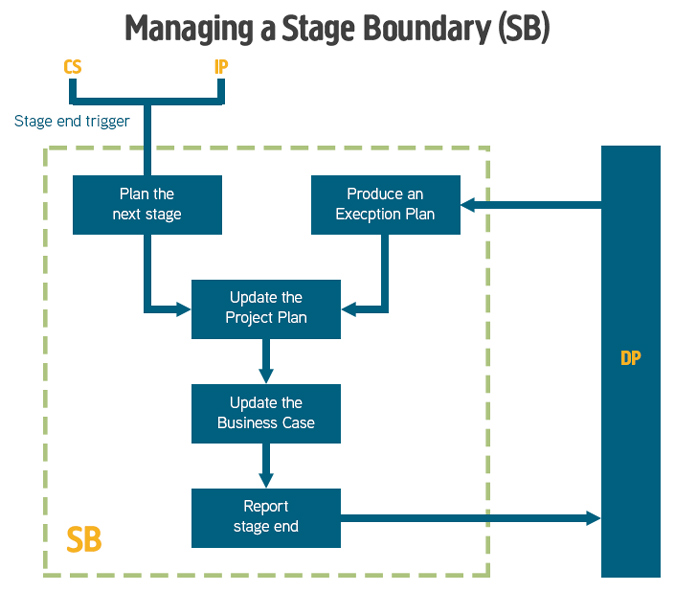PRINCE2® PROCESSES - Managing a Stage Boundary

The purpose of the Managing a Stage Boundary process is to enable the Project Board to be provided with sufficient information by the Project Manager so that it can review the success of the current stage, approve the next Stage Plan, review the updated Project Plan, and confirm continued business justification and acceptability of the risks. Therefore, the process should be executed at, or close to the end of, each management stage. The PRINCE2 Processes are covered in detail on our PRINCE2 Foundation training and PRINCE2 Practitioner training courses.
The objective of the Managing a Stage Boundary process is to:
- Assure the Project Board that all products in the Stage Plan for the current stage have been completed and approved
- Prepare the Stage Plan for the next stage
- Review and, if necessary, update the Project Initiation Documentation (in particular the Business Case, Project Plan, project approach, strategies, project management team structure, and role descriptions)
- Provide the information needed for the Project Board to assess the continuing viability of the project – including the aggregated risk exposure
- Record any information or lessons that can help later stages of this project and/or other projects
- Request authorization to start the next stage.
The main products of this process are as follows:
- An End Stage Report produced by the Project Manager and given to the Project Board, outlining information on the current stage achievements.
- Current Stage Plan actuals showing the performance against the original Stage Plan.
- The Next Stage or Exception Plan for approval.
- Project Initiation Documentation may require updating.
- A revised Project Plan incorporating all the actual metrics.
- An updated Risk register, together with the Updated Business Case and Project Plan, which is used by the Project Board to review that the Project has continuing ongoing viability.
- Configuration item records created/updated for new stage products.
- An updated Business Case.
- The Lessons Log.
- Any changes to the Project Management Team with updated Job Descriptions.
Team plans may also be produced when planning the next stage, defining the work packages that will be produced in the next stage.
Andy Trainer
12 Jul 2007
Within the Directing a Project (DP) stage of PRINCE2®, authorising a project is a particularly important process.
Without it, the next stage plan cannot be approved which means that the project cannot proceed.
In this post we'll take a look in more detail at why it is a necessary process, who is responsible for each aspect and how it should be carried out.
If you'd like to find out more about PRINCE2 processes like authorising a project, try our PRINCE2 Courses.
Why is it Needed?
By using this process it means that the project board can make sure that there is:
- An acceptable Business Case in place (read 'What is a Business Case?' for more details)
- The goals and methods of the project match that of the corporate strategy
- An acceptable set of tolerances (and scope) has been set
- Risks are accepted and outlined fully
- The right controls have been set

Andy Trainer
4 Feb 2013
If you've attended our PRINCE2® Foundation or PRINCE2 Practitioner course and want to start a project using PRINCE2 back at work, you'll need somewhere to start.
Here you can download official PRINCE2 project templates to help you to manage your project effectively.
You can download a zipped folder containing all of the PRINCE2 project templates or select individual templates from the list below:

PRINCE2 Project Templates:
- Benefits Review Plan
- Business Case
- Checkpoint Report
- Communication Management Strategy
- Configuration Item Record
- Configuration Management Strategy
- Daily Log
- End Project Report
- End Stage Report
- Exception Report
- Highlight Report
- Issue Register
- Issue Report
- Lessons Log
- Lessons Report
- Project Plan
- Product Description
- Product Status Account
- Project Brief
- Project Initiation Documentation
- Project Product Description
- Quality Management Strategy
- Quality Register
- Risk Management Strategy
- Risk Register
- Work Package
Andy Trainer
18 Nov 2009